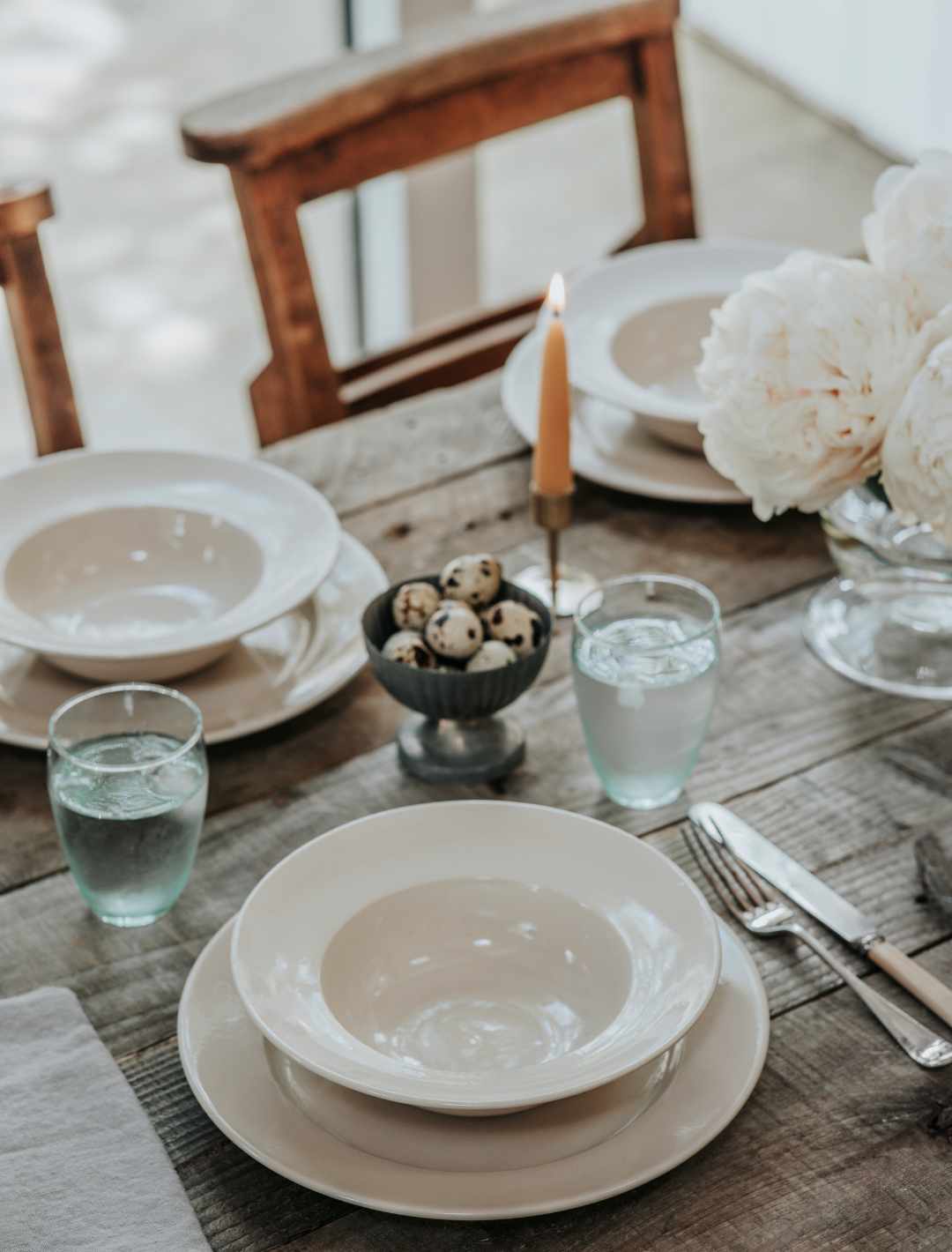
At the John Julian workshop we make our pieces in two different ways. Most of our plates and bowls are made by hand on a jolley machine, while our some of our serveware and our pestles and mortars are hand thrown on a potter’s wheel.
Jolleying, or jiggering, was first introduced in the 18th century as a way to mass manufacture ceramics. At John Julian, we see it as a tool, akin to a potter’s wheel – it enables us to create our tableware range with relative uniformity but it certainly doesn’t remove the human element to creating the pieces.

|
Like a potter’s wheel, a jolley has a rotating base but it is designed to have a plaster mould shaped like the outside of an object (like a plate) sat on top of it. As the mould revolves, a lever is brought down to push the clay into the mould. Whilst this stage of the process is mechanised, it requires skill to use the jolley machine accurately and strength to pull the arm of the lever down. Once the clay has been jolleyed, the excess clay around the edges is trimmed away. Any design details are added at this point whether it’s a stamp or a painted line, before being left to dry.
Once the piece has dried a little, it is removed from its mould and fettled – a process of refining any seams showing from the mould and smoothing out the clay.
It’s then back on the potter’s wheel where a John Julian back stamp is added. Wax is applied to the foot ring with a brush so that when the glaze is sprayed it is easy to wipe it off, meaning that the piece will not stick to the kiln shelves when it is fired. Then it’s off to the glaze booth to be glazed before heading to the kiln to be fired.
|
 |
 Amy packs the kiln with our tableware.
Amy packs the kiln with our tableware.


 Amy packs the kiln with our tableware.
Amy packs the kiln with our tableware.


